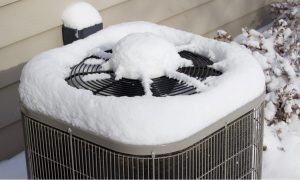
Despite the recent 80 degree days we’ve had this October, the winter heating season will soon be upon us. And unfortunately, natural gas prices are rising due to increased U.S. demand and the ongoing energy crisis in Europe. In order to help you conserve energy and keep winter heating costs down, we’ve compiled a list of winter heating tips below.
1. Set your thermostat to 68 degrees. For every degree you lower your thermostat below 70, you’ll save an easy 5% on your heating costs. Just a 2-degree decrease, from 70 to 68 degrees, rounds up to a nice 10% cut in your energy expenses. With that said, DON’T turn the heat off while you’re away. It takes more energy to bring your home back to a comfortable temperature, and your pipes could burst if the temperature drops below freezing. Instead, simply lower your thermostat down a few degrees.
2. Invest in a programmable or smart thermostat. Programming your thermostat enables you to lower the temperature when you are at work or asleep to conserve energy and raise the temperature before you return home to maximize comfort. The majority of programmable thermostats allow you to set multiple time frames and temperatures to fit your lifestyle. We recommend smart thermostats, such as the Nest, as they can save you 10 to 12 percent in heating costs.
3. Flip your fan switch. If your ceiling fan has a reverse switch, you’ll want to flip that when you turn your heat on, making your fan’s blades spin clockwise. This causes the fan to produce an updraft, forcing the hot air that rises to your ceiling down and into the rest of the room.
4. Open blinds and drapes during the day and close them at night. During the day, let the sunshine in through your windows for added warmth. At night, make sure all windows are covered to prevent drafts and loss of heat through the glass.
5. Move furniture away from vents. Take a quick look around the house and double-check that none of the vents are blocked. If they are, find a way to move your furniture, at least for the winter. This will make sure every room is reaching its maximum warming potential.
6. Direct the heat to the rooms you use the most. Speaking of ensuring each room reaches maximum heat, closing the doors and vents to unused rooms will help focus the home heating efforts to the important portions.
7. Be mindful of wood-burning fireplaces. It may be warm right by the crackling flames, but all the heat being exhausted up through the fireplace pulls cold air into the house elsewhere. Be sure to use a glass front for your fireplace and remember to keep the flue closed when the fireplace isn’t in use to help keep most of the heated air in your home from escaping up the chimney once the flames have gone out.
8. Seal ducts and plug door and window leaks. Check the tightness of air ducts and be sure to plug any visible open spots with insulation material. While you’re at it, check your doors and windows — they could be responsible for wasting 10% of your energy costs. Fix these leaks by installing weather-stripping or caulk around drafty doors and windows. Electrical outlets in exterior walls are also an extremely common cause of heat loss in your home, as are the gaps around water pipes where they pass through walls. Make sure you inspect these areas of your home and seal up any cracks to further reduce heating costs.
9. Maintain your heating system. Keep the filter clean and hire a licensed contractor to inspect your unit. If your unit has been in use for 15 years or longer, consider getting an upgrade for improved efficiency.
10. Wear warm clothes. This is one of the easiest and most cost-effective ways to lower your gas bills during the winter. Most energy efficiency websites recommend a maximum heating temperature setting of less than 70 degrees. For those of you who feel cold at temperatures below 70 degrees, a light jacket, sweatshirt, long sleeve shirt, or sweater can help keep you warm without having to raise your thermostat temperature and therefore your natural gas usage.







